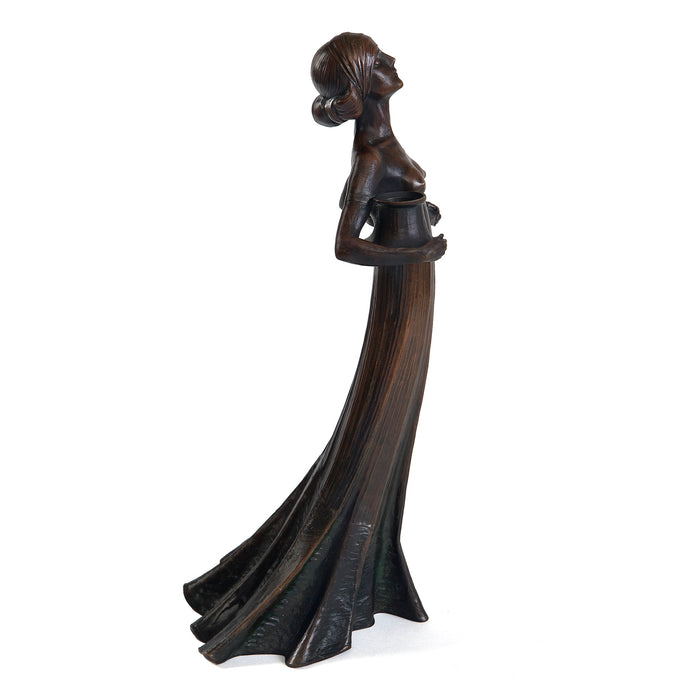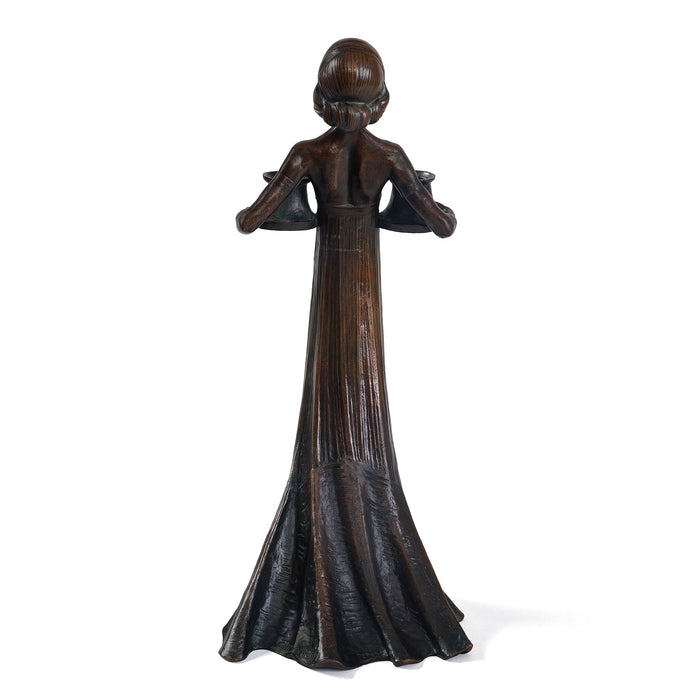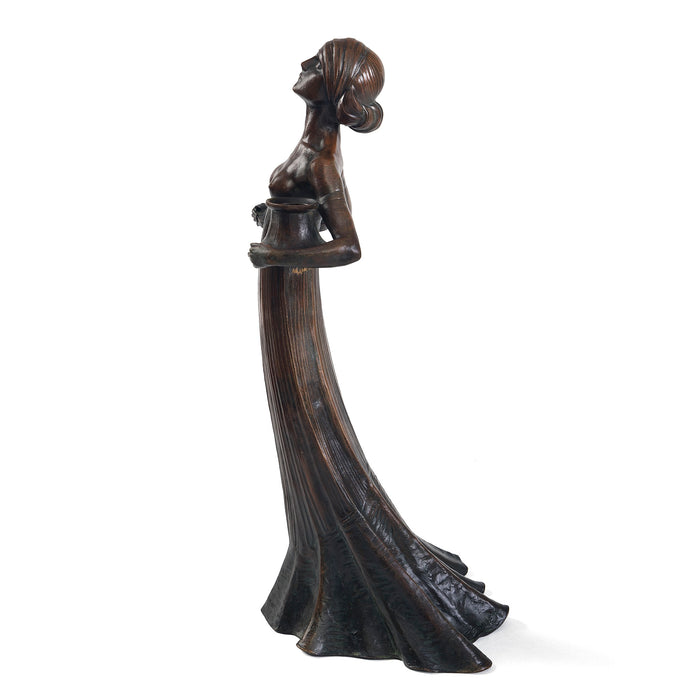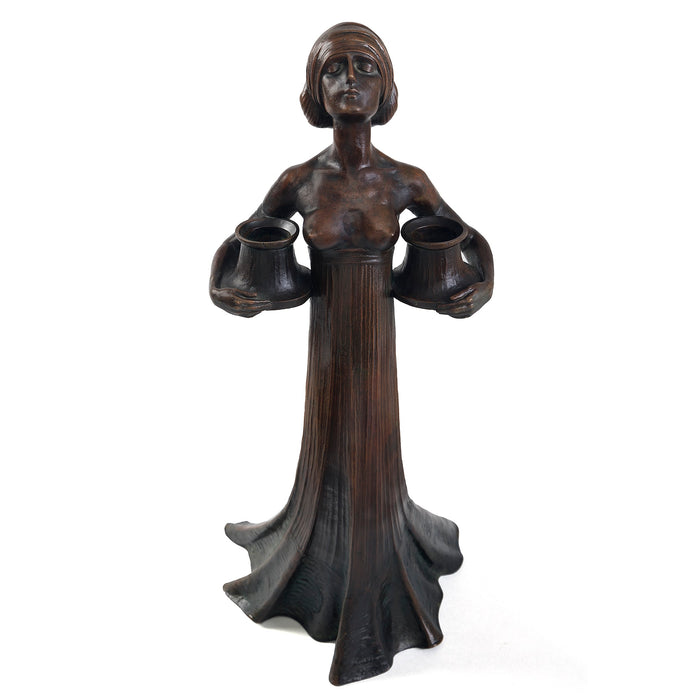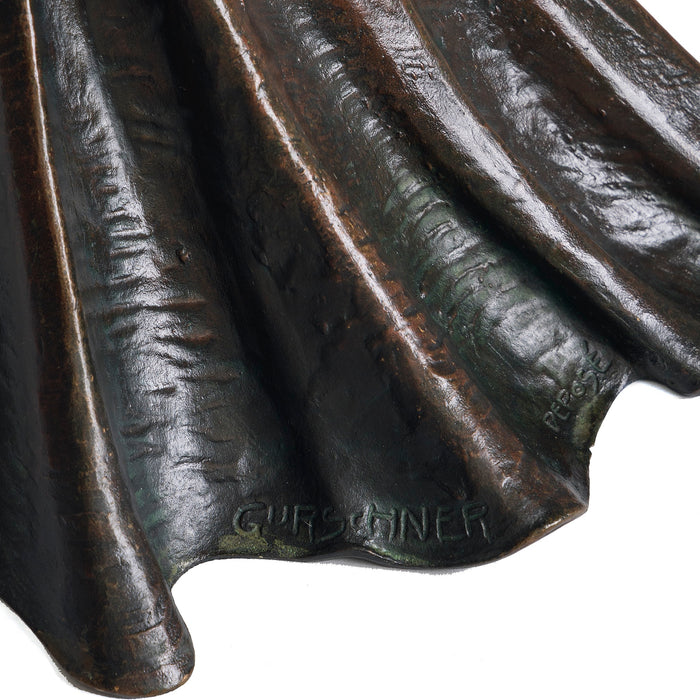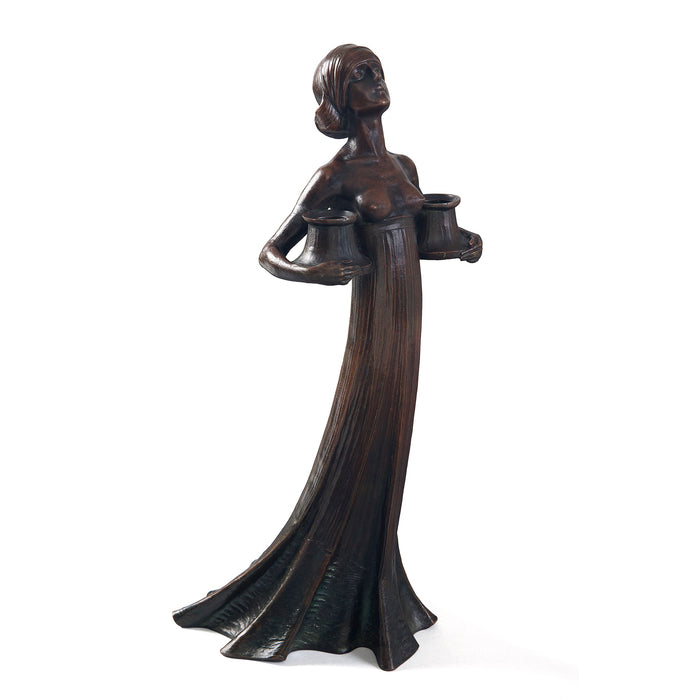
Gustav Gurschner Bronze Female Figure Candelabrum
- Product Details
- Curator's Notes
Item #: YS-20966
Artist: Gustav Gurschner
Country: Austria
Circa: 1902-1904
Dimensions: 16.25" high x 7" wide x 7" deep
Materials: Patinated Bronze
Signed: impressed "GURSCHNER/DEPOSE"
Provenance: Rudi Schmutz, Vienna
Acquired from the above by the present owner, circa 1980s
Literature: Alastair Duncan, Art Nouveau Sculpture, New York, 1978, p. 49
Wolf Uecker, Art Nouveau and Art Deco Lamps and Candlesticks, New York, 1986, p. 15
Yvonne Brunhammer and Suzanne Tise, French Decorative Art, the Société des Artistes Décorateurs 1900-1942, Paris, 1990, p. 8 (for the model depicted in the Manuel Orazi poster)
A similar candlestick is pictured in: The Paris Salons 1895-1915, Vol. V: Objects d'Art and Metalware, by Alastair Duncan, Woodbridge, Suffolk: Antique Collectors' Club, 1999, p. 305

